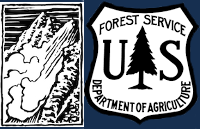GNFAC Avalanche Forecast for Wed Mar 10, 2021
<p>The mountains near West Yellowstone, Big Sky, and Bozeman received 4-8” of snow equal to 0.4-0.7” of <a href="https://www.nrcs.usda.gov/wps/portal/nrcs/detail/or/snow/?cid=nrcs142p2… water equivalent</a>-SWE in the last 48-hours. In his <a href="https://www.youtube.com/watch?v=gPWSDAr-K1Q"><strong>video</strong></a&…; from the Northern Bridgers, Ian provides a good discussion of how to responsibly explore more adventurous terrain in a year defined by deeply buried persistent weak layers. He suggests taking “baby steps” rather than going all-in on big objectives in complex or exposed terrain, evaluating the snowpack to minimize surprises, and rigorously following safe travel protocols by exposing <em>only one person at a time</em> to potential avalanche hazards. As he said, “It may be unlikely, but if you trigger a slide, it could be catastrophic.” Recently, groups in Hyalite and near Hebgen Lake followed this travel model, found areas of unstable snow, and pulled the plug on skiing steep terrain. This is precisely how it should work in periods of low danger. Search for isolated instabilities and adjust your plans if you find them.</p>
<p>The last human-triggered avalanches we know of occurred ten days ago in the Madison Range (<a href="https://www.mtavalanche.com/weather/wx-avalanche-log"><strong>avalanche… log</strong></a>). Without significant new loading, deep-slab avalanches are unlikely, but the weak facets near the ground and the fundamental nature of the snowpack haven’t changed (<a href="https://www.youtube.com/watch?v=H8RLSPzsCtc"><strong>video</strong></a&…; from the Throne, <a href="https://www.youtube.com/watch?v=jHcGBFkyLbk&list=PLXu5151nmAvQDzKmH…; from Maid of the Mist).</p>
<p>Today, follow Ian’s travel advice and pay attention to instabilities within the new snow. Storm snow avalanches will be relatively small but they can be hazardous in the context of steeper or more technical terrain. The avalanche danger is LOW.</p>
<p>The mountains around Cooke City received 6-10” of new snow equal to 0.6” of SWE. Yesterday, skiers observed several small storm slab avalanches (<a href="https://mtavalanche.com/images/21/storm-slab-cooke-city"><strong>photo<…;). Slides like this are dangerous in the context of steep and technical terrain if they tumble us into trees or off cliffs. Stay heads up for areas where yesterday’s wind may have drifted snow and enhanced potential avalanches’ size. Minimize time spent under behemoth cornices that overhang slopes this time of year. A cornice collapse on a small slope west of Cooke City is a good indicator of what a fall would be like where they are larger (<a href="https://mtavalanche.com/images/21/cornice-drop-west-cooke"><strong>phot…;). Watch for areas of isolated instability like the wind-loaded slope a rider triggered east of Cooke City on Friday (<a href="https://mtavalanche.com/node/24583"><strong>photos and details</strong></a><strong>: EVENT DATE CORRECTED</strong>), carry rescue gear, and expose only one person at a time to avalanche terrain. The avalanche danger is LOW.</p>
<p>If you get out, please send us your observations no matter how brief. You can submit them via our <a href="https://www.mtavalanche.com/node/add/snow_observation"><strong>website<…;, email (<a href="mailto:mtavalanche@gmail.com"><strong>mtavalanche@gmail.com</strong></a…;), phone (406-587-6984), or Instagram (#gnfacobs).</p>
The Beacon Park at Beall Park in Bozeman is running!
The Friends of the Avalanche Center in partnership with the City of Bozeman put in a Beacon Park at Beall Park. It is located on the north side of the Beall building between N. Bozeman Ave. and the ice rink. Stop by with your
